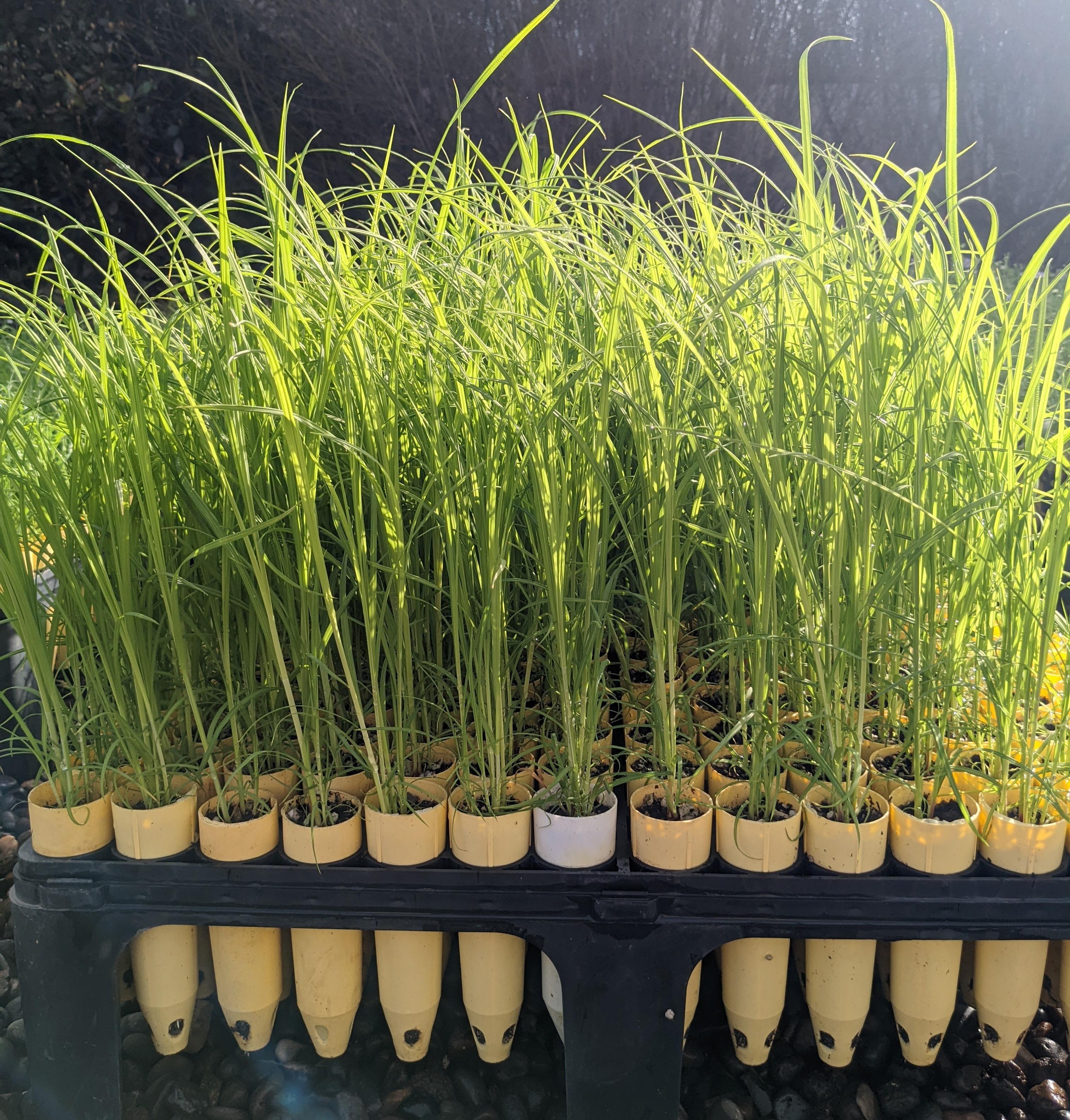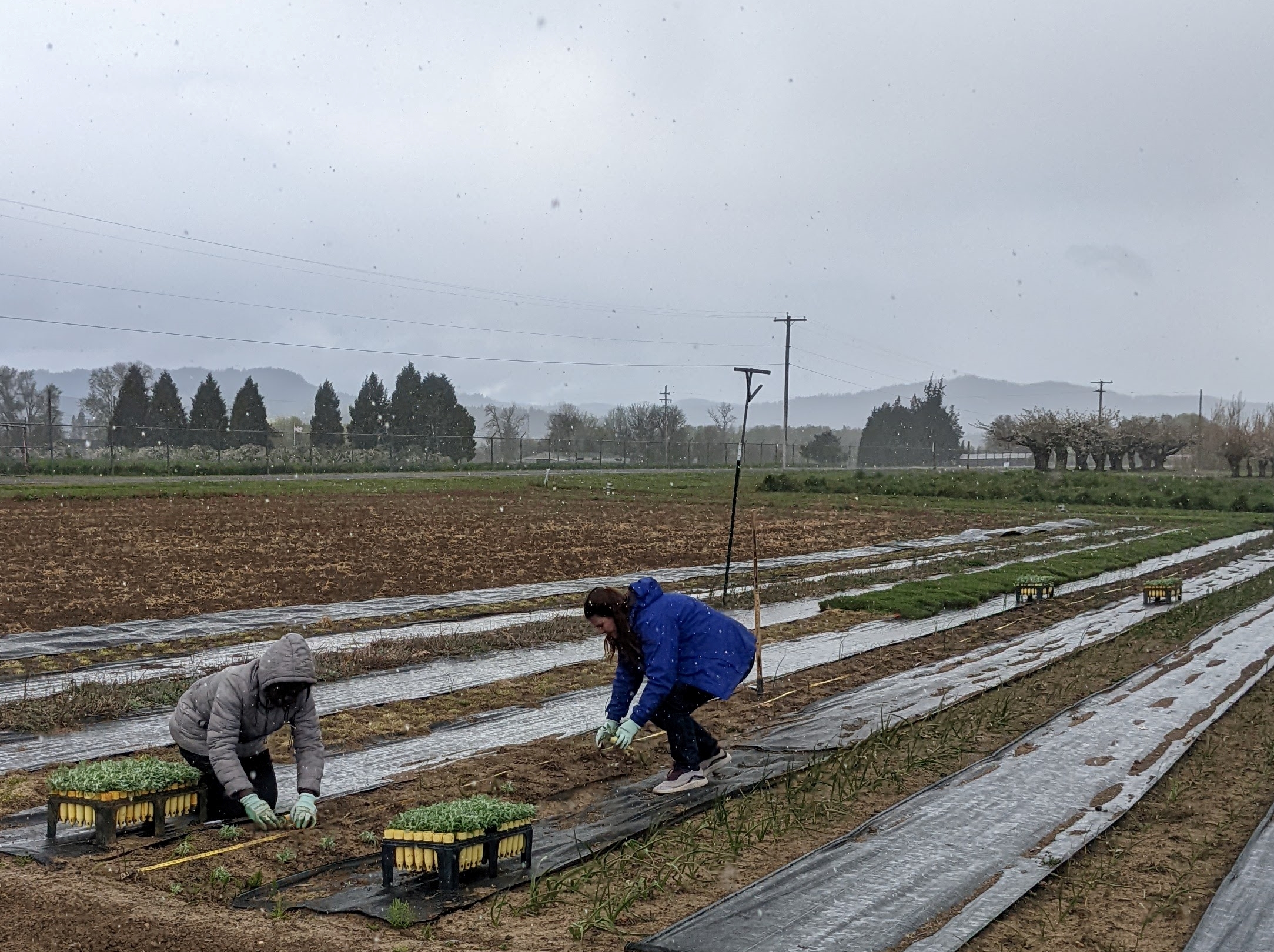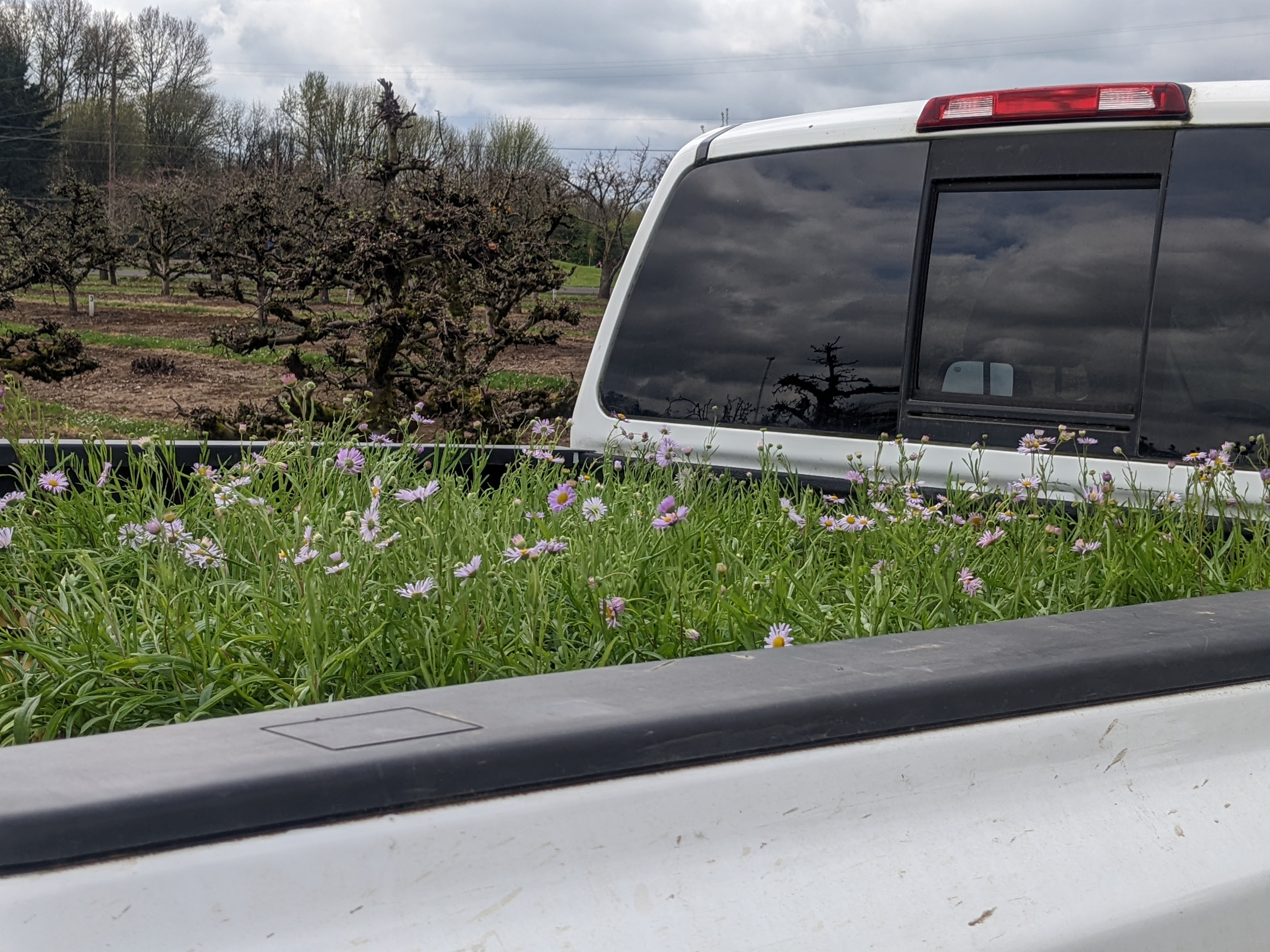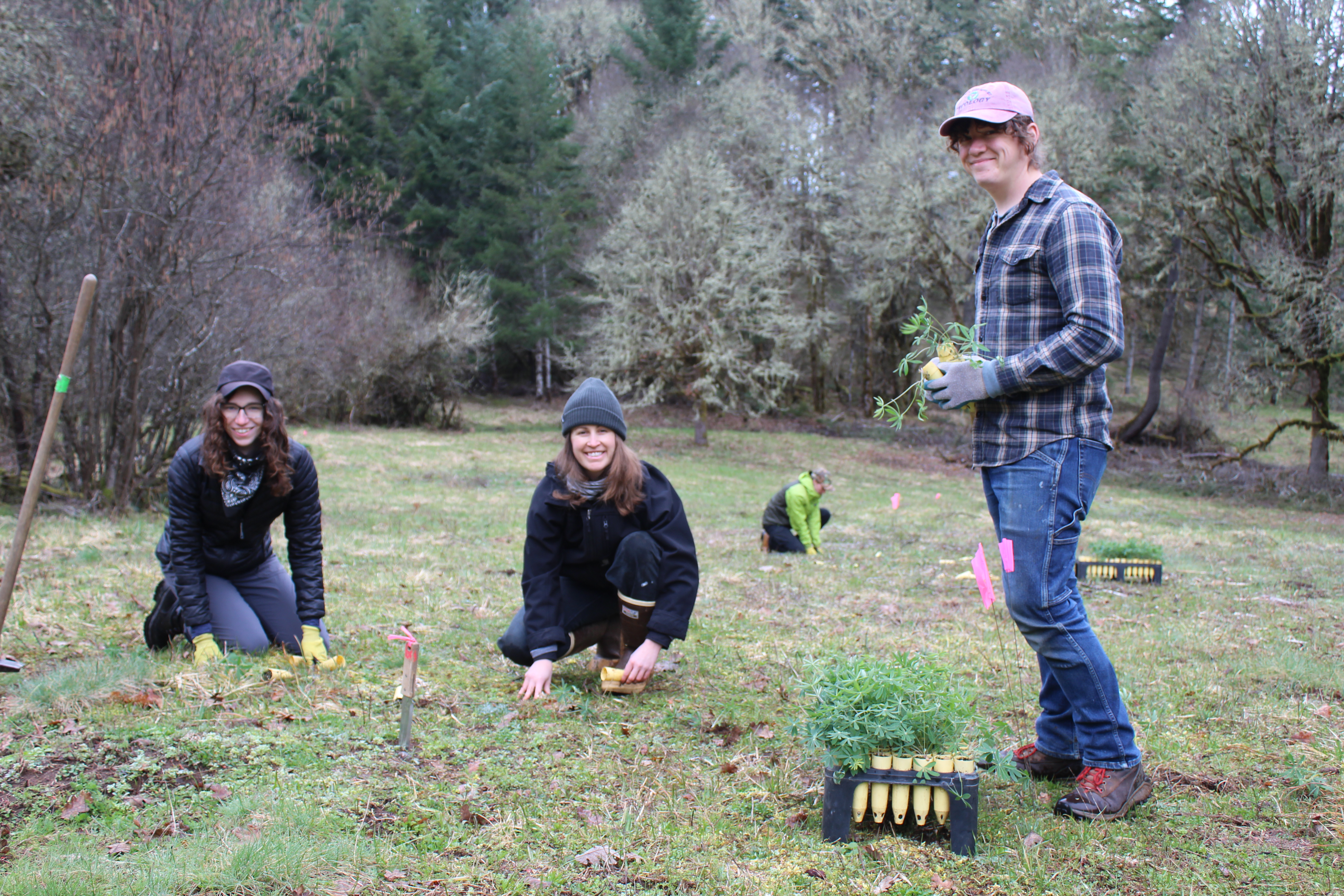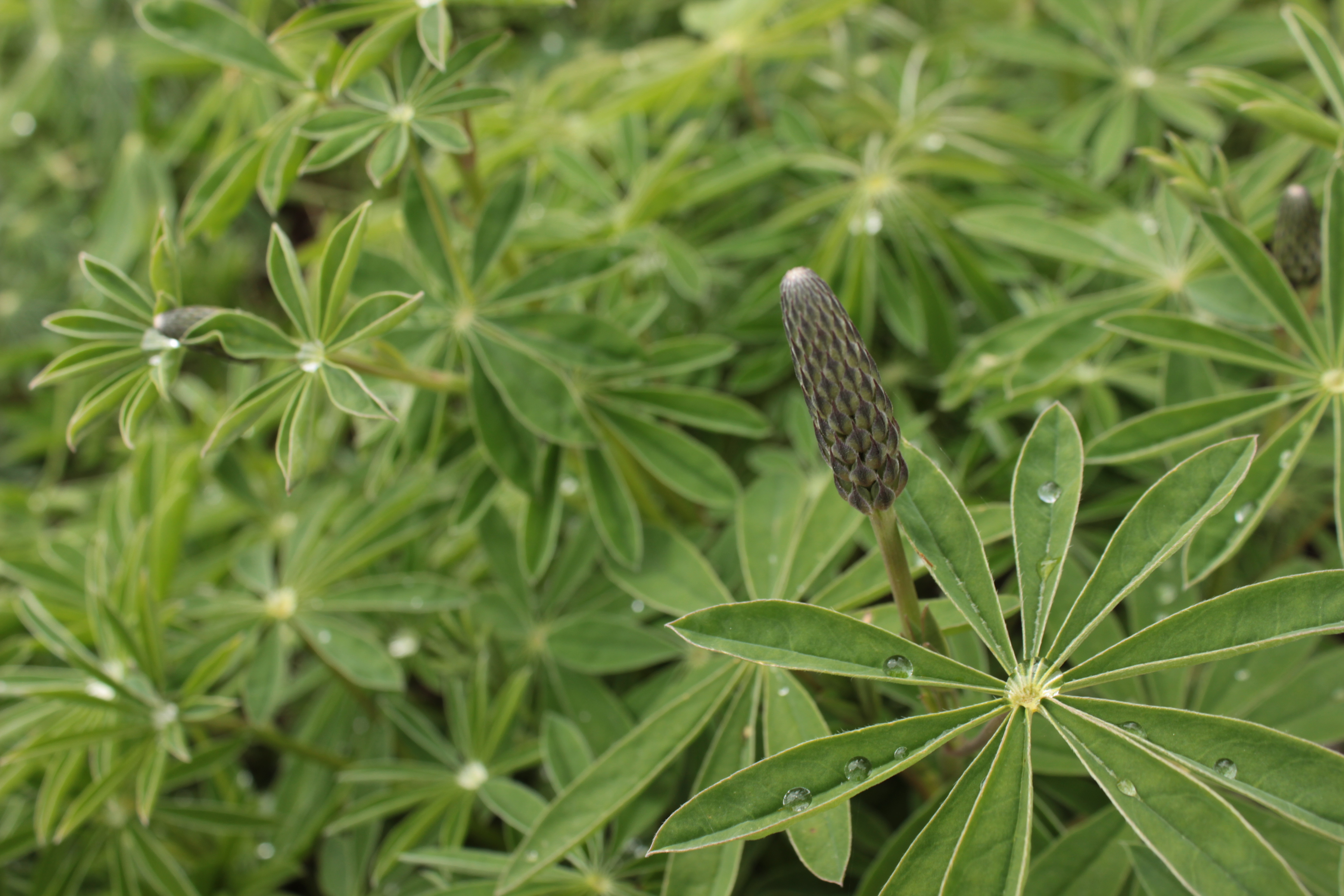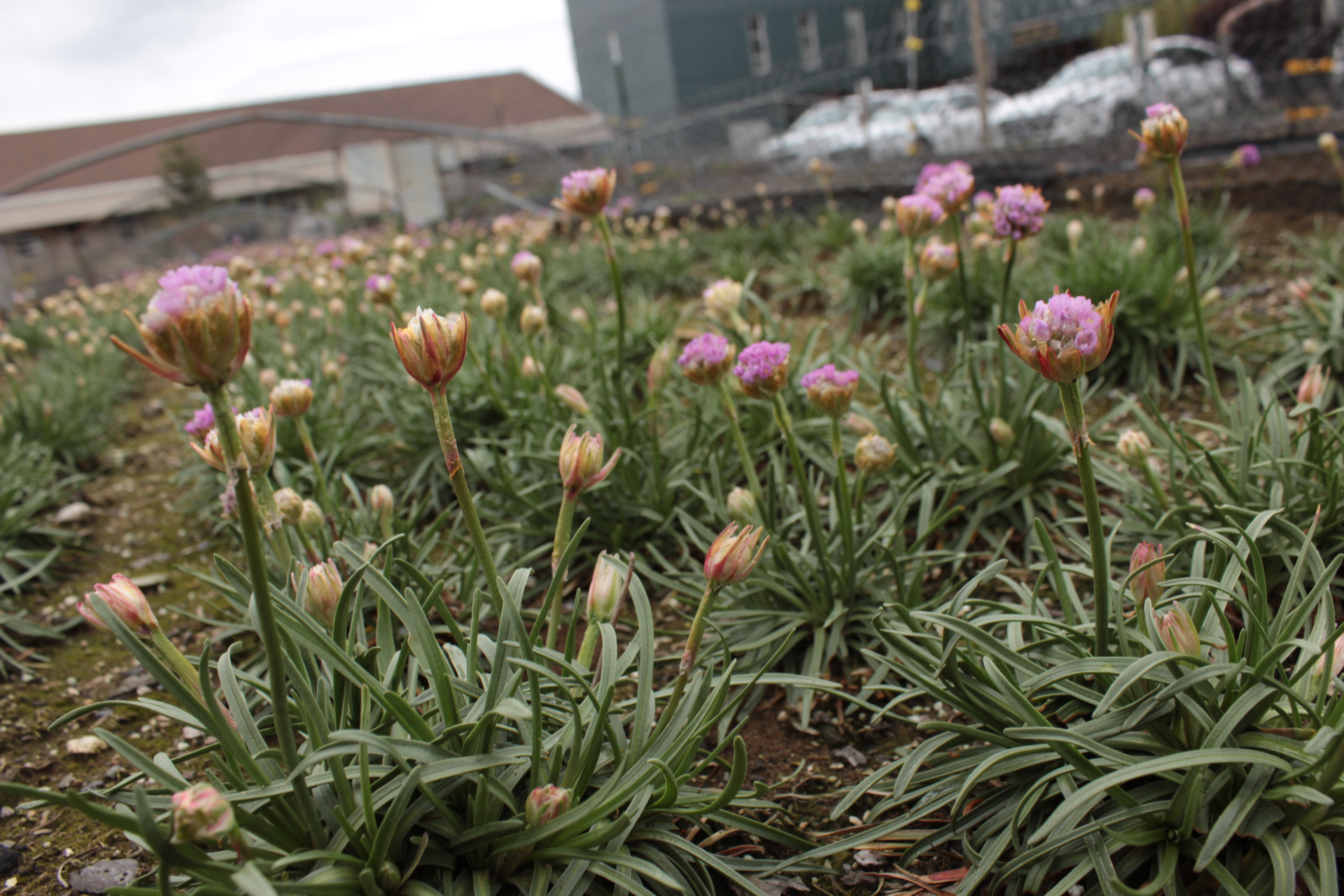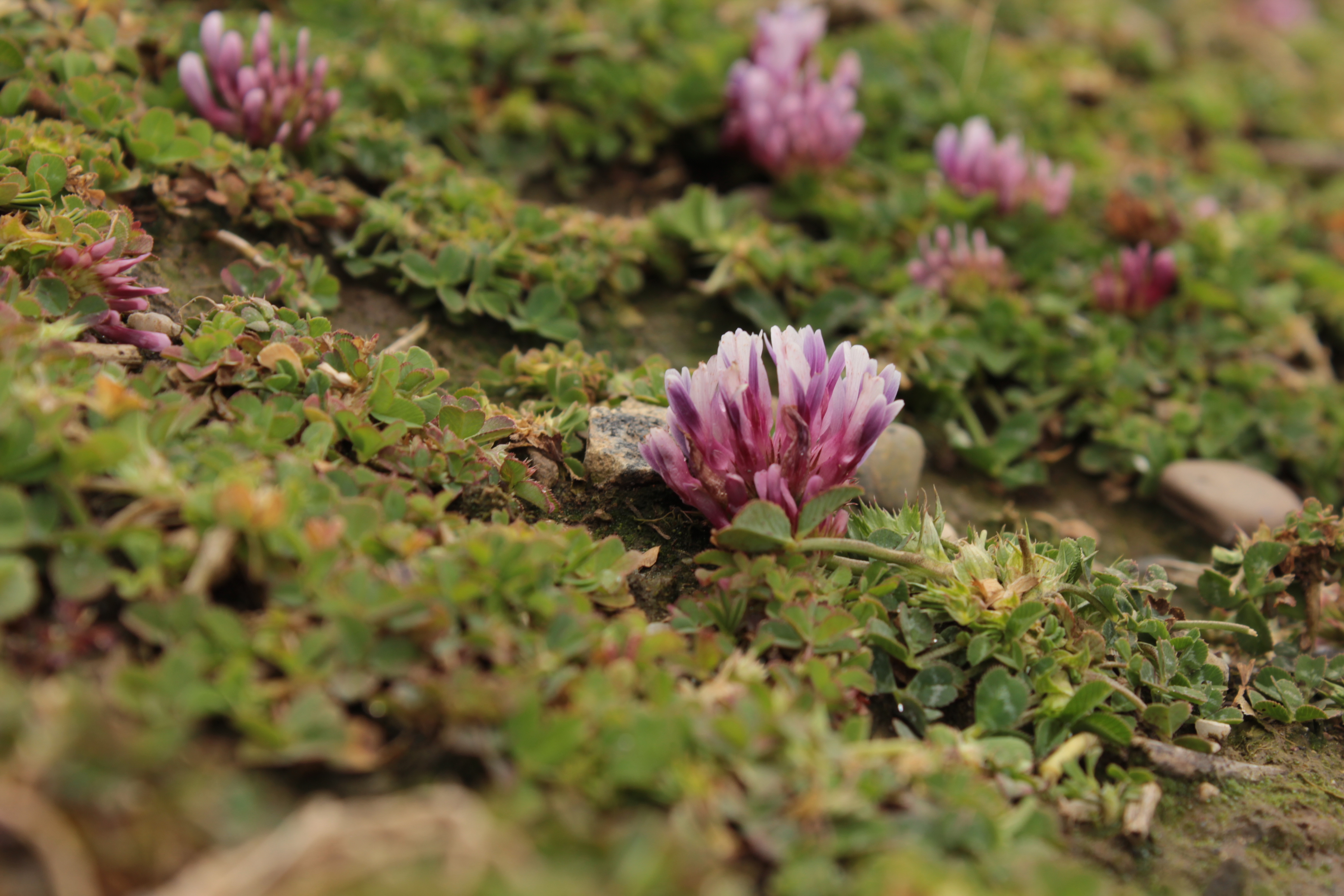
Singin’ in the Rain!
By Mara Friddle and James McAuliffe
April 2022
Though the cool rains still fall at our Corvallis area farm locations, spring’s intrepid blooms have begun to brighten the gloom. Rather than describe their beauty, we thought a photo farm tour might be more fun!
Life under glass
We’ll start our tour in the greenhouse. Each year the farm team produces plugs that are destined for either amplification fields at the farm or planting back into restoration sites. This production season began in August of 2021 and, from then to now, the farm team produced a whopping 47,000 plugs!
A place in the sun
As our plug production season ended, our field planting season came into full swing. We planted 8 new seed amplification beds, braving the wind, rain and hail, but with much needed help and company. Each bed ranges from the smallest, being 5’x40’ through the largest being 30’x150’ in size.
Well worth the wait
In 2018, IAE began the process of installing several bulb crop amplification beds. They were first seeded into flats and allowed to grow their bulbs in those flats for two years, to achieve bulbs of sufficient size to plant in the field. In the fall or 2020, with the help of an AmeriCorps crew, 4 new beds were planted. 2022 is the first year we expect to have a harvest from these fields. Narrow leaved onion (Allium amplectans), and great camas (Camas leichtlinii) grown for the Willamette Valley Native Plan Partnership are not pictured.
Timeless beauties
IAE has many beds that have been in production for years. Those are all beginning to wake up from their winter slumber and push their flowers skyward.
Restoration
Research
Education
Get Involved
Contact
Main Office:
4950 SW Hout Street
Corvallis, OR 97333-9598
541-753-3099
[email protected]
Southwest Office:
1202 Parkway Dr. Suite B
Santa Fe, NM 87507
(505) 490-4910
[email protected]
© 2024 Institute for Applied Ecology | Privacy Policy

